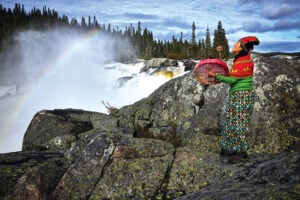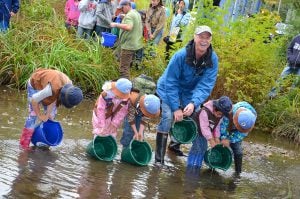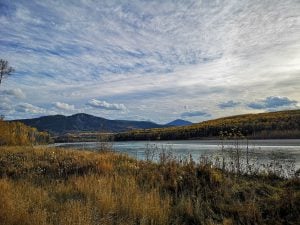Last Wednesday, I paddled on 31-mile long Lake Lebarge, which was made famous in a poem by Robert Service called The Cremation of Sam McGee.
An Arctic tern buzzed over me at very low altitude at one point. When he turned and did it again, I got the message that I must be close to his nest, so I paddled quickly away. Arctic terns are beautiful birds: sleek and fast, which helps them with all of their circumglobal flying each year.
I’ve seen lots of bald eagles too, adults and immature ones. The young ones are still very big, but don’t have the distinctive white heads and tail. Shortly after getting the very low flyby from the Arctic tern, an immature bald eagle approached my canoe from straight ahead and at about 100 metres altitude. His wingspan was well over a metre. He drew nearer and nearer, then suddenly dove right down at me. For a second, I thought he was going to hit me, but then suddenly he turned away, hugging the waves.
If he could’ve done a victory roll, I’m sure he would’ve.
That just proves that even eagles have their juvenile delinquence.
Thursday I got off Lake Lebarge and paddled the 30-mile (48-kilometre) section of the Yukon River, which is a Canadian Heritage river. My trip continues.
Allen Macartney is completing a solo trip on the Yukon River to retrace the route of prospectors in the days of the Klondike gold rush. Read more of his blog posts and learn about his Royal Canadian Geographical Society-funded expedition.




